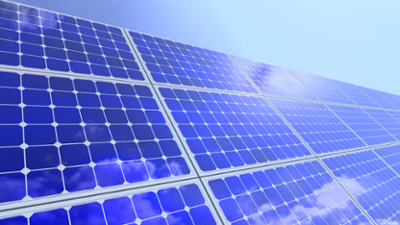

What are sustainable energy sources?
Energies that are clean and environmentally-friendly are a key factor in this sustainable mode. Their inexhaustible capacity makes them essential in the development of new societies that wish to care for their surroundings.
Fighting against climate change is increasingly decisive. If this can be done at any link of the chain that is created in society through the production process, either through production, consumption or living in society, it will always be positive. In alignment with this idea are the renewable energy sources. Options that have surged immensely in recent years and which avoid producing greenhouse gas emissions that are harmful to the planet.
The search for alternatives that help care for the ecosystem where we live contributes to the importance of this affordable and non-contaminating energy alternative. The accompanying technological development, which is at a high point, is allowing the costs of producing sustainable energy to become increasingly lower. Another key factor.
So, when we talk about sustainable energy, we’re talking about the source “which meets all the needs of the present without compromising the ability of future generations to meet their own needs” as defined in the Glossary of Terms in Sustainable Energy Regulation.
Such is the importance of sustainable energy that it is also contained within the Sustainable Development Goals, specifically number 7. This goal aims to “Ensure access to affordable, reliable, sustainable and modern energy for all”. Therefore, it is one of the goals that the entire world is working on to promote this kind of non-contaminating energy.
Within sustainable energy we find various types, which we explain below. We have biomass, wind energy, hydroelectric energy, geothermal and solar energy.
Biomass
This renewable energy source feeds from the biodegradable portion of organic waste matter to turn it into energy. In further detail, biomass is obtained from the decomposition of the bacteria contained in organic waste through thermochemical conversion or biological combustion processes.
A clear example that we see in daily life are pellets that are used to feed boilers. This alternative was created using natural sawdust, and it provides a high level of energy.
Wind Energy
In this case, the energy is obtained from wind, which is transformed into electricity thanks to wind turbines.
As we saw in a previous article, pros and cons of wind energy, there are many more positives to this energy than negatives, because a large amount of electricity is generated at a low cost and with low impact.
Hydroelectric energy
This alternative offers several options, all with water as the common factor. They all use water resources and its strength when it moves to provide energy.
Energy is generated by transforming the power at which water moves, thanks to infrastructures that are built to maximise it, and to be able to turn it into energy resources. These infrastructures are known as hydroelectric plants, among which are dams or reservoirs.
Tidal energy
This is another variant produced by water. In this case, it is based on the force and movement of waves. This system converts the movement of water in the sea that takes place thanks to the force of gravity.
Geothermal energy
This affordable, sustainable and non-contaminating energy is obtained thanks to the heat generated inside the Earth to produce electricity. It is harnessed via various catchment systems for the heat produced in different areas thanks to natural development.
This is one of the most efficient energies, as it can work at any time.
Solar Energy
The last energy discussed in this article is possibly the most well-known. This energy is produced from the sun. This includes photovoltaic, thermosolar or thermal energy. These types of energy are generated from the light, heat or ultraviolet rays from the sun.
Technological advances have enabled us to transform everything produced by the sun into energy, thanks to photovoltaic panels, batteries or farms that can easily produce it.
All of this and more will be discussed at the Global Mobility Call congress.





